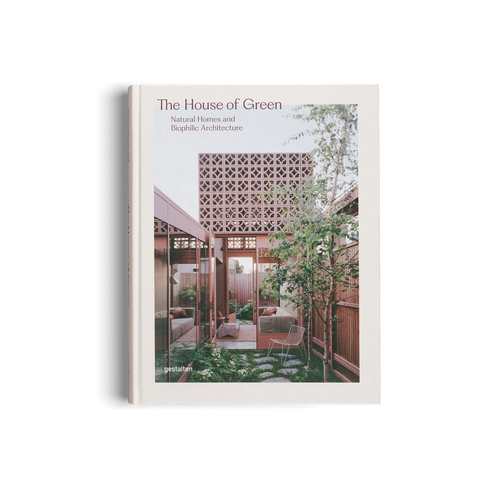
10/2020 design & fashion
The wagasa—Japanese paper umbrella—may seem to be distinctly outdated. Time-consuming and difficult to make, with a price tag to match, this item has had a turbulent history since the introduction of the Western umbrella, with many producing regions consequently declining. These days there are only three main centers of wagasa, with Gifu, a city in Japan being the most prominent.
The history of Gifu and the raw materials that are native to the landscape made it a perfect place for the complicated production cycle of the Japanese umbrella to flourish. In the Sengoku period, Gifu’s central location made it a strategic and economic nexus that was covered by many warlords; it eventually came under the rulership of the infamous Oda Nobunaga, one of the most influential figures in Japanese history. Under his stewardship and the free market that he established, the economy of Gifu and its surrounding areas grew immensely. Even after Oda’s death, expert crafts continued to flourish in the area, with Mino to the north becoming a nationally famous washi producing area, and Seki renowned for producing some of the finest katana, or swords, in the nation. Gifu itself became a town of high culture, with cormorant fishing and a geisha quarter, and difficult crafts such as lantern-and umbrella-making thrived. The introduction of wagasa to Gifu occurred in 1639, when the Matsudaira clan came into power, bringing with them umbrella artisans from their home in Hyogo prefecture.


Gifu is home to some of the rarest machines ever invented to speed up the production of the many different parts of umbrellas. Artisans here sometimes deal with spies from other prefectures keen to learn how the machines work. (Photos: Irwin Wong, Handmade in Japan)
Originally, the craft was practiced by lower-ranked warriors to supplement the income of the clan, which had suffered financial setbacks due to a spate of natural disasters. However, the geography of Gifu helped develop the craft into the art form it is today. Sturdy, beautiful washi from nearby Mino was readily available to paper the umbrellas, and high-quality blades from Seki were on hand to help artisans split and shave the local bamboo down to the delicate spindles that form the skeletons. By the end of the Edo period in the late 19th-century, the output of the region was nearly 520,000 units. At its peak in the 1950s, following some modernization, the figure reached a staggering 15 million umbrellas per year, with 600 workshops operating in the city. Today, only three workshops are producing full-time, making around 5,000 umbrellas a year.
Ikumi Kawaguchi is the operator of the local NPO Organ, which is dedicated to keeping Gifu wagasa from dying out. A crowdfunding effort has helped open a wagasa specialty store and showroom in an old townhouse. Only recently has the industry started to promote umbrellas as a local product—an uphill battle against a recalcitrant city council and the difficulty of selling something that is so readily available for a fraction of the price. “Interestingly, it has been foreign customers that have helped us realize the quality of our work,” says Kawaguchi, citing a recent pop-up store in Tokyo’s Haneda Airport, where 10 umbrellas ranging between USD 250 to 450 were sold in the span of a month. In recent years, there have been instances of other areas sending agents to learn under the Gifu umbrella artisans to steal their knowledge and equipment.

Papering is still done by hand, as is the decorative string patterning on the underside of each umbrella. New designs are prompted by the beautiful varieties of washi coming from neighboring Mino and have been featured in fashion magazines including Vogue. (Photo: Irwin Wong, Handmade in Japan)
The problem for these other wagasa-producing regions is currently the dearth of parts. Wagasa consists of several highly refined and carefully engineered parts, and Gifu is currently the only place in Japan with the capacity to produce them on an industrial level—or any level at all for that matter. Key among these is the central part of the umbrella—two round pieces of wood called rokuro, forming the spines that facilitate the opening and closing of the wagasa. Made out of dried egonoki wood, these parts are carved with 40 to 60 fins, each with diagonally drilled holes through which needles can pass, threading the bamboo pieces together. Kazuo Nagaya has the only workshop in Japan capable of producing these incredibly intricate wooden parts, using machines that he has customized for this sole purpose. This rokuro must be made in a variety of different sizes for the many varieties of umbrellas that are needed for teahouses, wedding processions, Kabuki performances, and other purposes. “The smaller ones are machine-made, however, the larger ones need to be hand-carved,” he says. Nagaya is the linchpin of the wagasa business, and the quest to find a successor is ongoing.
A small distance away is the Fujisawa Maruto company. Established in 1931, the company acts as a wholesaler as well as manufacturer and has recently seen young couple Akio and Reiko Fujisawa take the helm. “Our machines are of special interest to competitors from other prefectures,” Reiko explains. The machines in question are Meiji-era bamboo slicing machines, alongside those required for shaving the ends to a width that can be fitted into the rokuro for sewing. A holdover from the era of mass-produced wagasa, these machines allow the complicated work of creating the skeleton to be completed speedily. “None of the manufacturers of these machines exist anymore. If any of them break, we must find a way to fix them ourselves.”

The traditional craft of Gifu umbrellas is particularly difficult to make with over 100 steps involved from start to finish. With all the skills required to make the umbrellas, it would be difficult for one person to make an umbrella through each step, they usually require multiple artisans. (Photo: Irwin Wong, Handmade in Japan)
Several young artisans are emerging in the wagasa world, bringing with them a beautiful design sensibility. One such artisan is Miki Takahashi, a solo artisan whose umbrellas are eye-catching and sophisticated. “I love washi,” she says. “Making umbrellas is a way for me to enjoy working with it daily.” This love is evident in the way she applies a persimmon-dyed washi to an umbrella frame, her hands gracefully pressing it down over a coating of tapioca-based glue. Adding perilla oil makes the umbrella water-repellent, and a complex embroidery of colorful string on the frame further enhances the attractiveness of an already beautiful item. Takahashi and her contemporaries are part of a new wave of artisans making people sit up and take notice of the wagasa as a fashion accessory as well as a practical item. The artisans of Gifu had to metamorphosize to stop their way of life from dying out. Traditional techniques that were mastered over generations took on contemporary forms attune with the Japanese industries of today, representing a beacon of hope for human craftsmanship against the grain of technology and globalized trade.
This story was originally written by Irwin Wong and featured in Handmade in Japan. Available in German and English.













